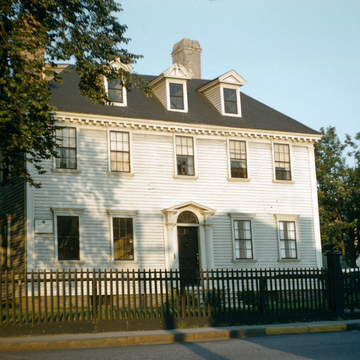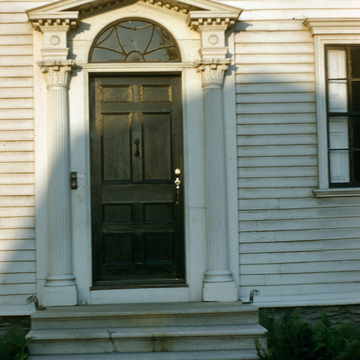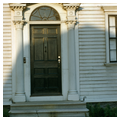At first glance this gable-on-hip-roofed house with ornate doorway surround, heavily capped windows, modillion cornice, and three pedimented dormers would seem to date from the mid-eighteenth century. Although the entry elevation and front half of the structure, set back some twenty-five feet from Spring Street, do in indeed date from about 1750, the rear portion was originally the two-room Jireh Bull House, built about seventy years earlier. Its heavy, chamfered summerbeams are still evident. When the wealthy businessman and privateer Captain John Mawdsley acquirred the Bull House, probably just after his marriage, he set about updating and enlarging it in keeping with his prominent social status, adding elements inspired by the Georgian classicism of Peter Harrison.
In 1795, after Mawdsley's death, the house was purchased by the merchant Caleb Gardner. During this period an early leader of Newport's African American community lived in the house as a slave under the name Newport Gardner. Also known by his African name, Occramar Marycoo, he was one of the founders of the African Humane Society. When freed, he purchased his own house a few blocks south of here at 86 Pope Street.























